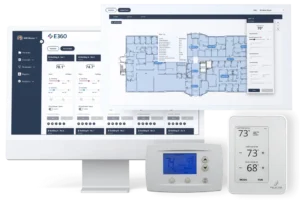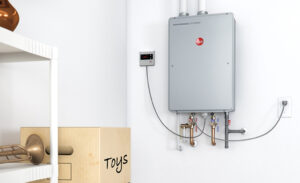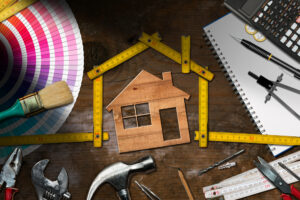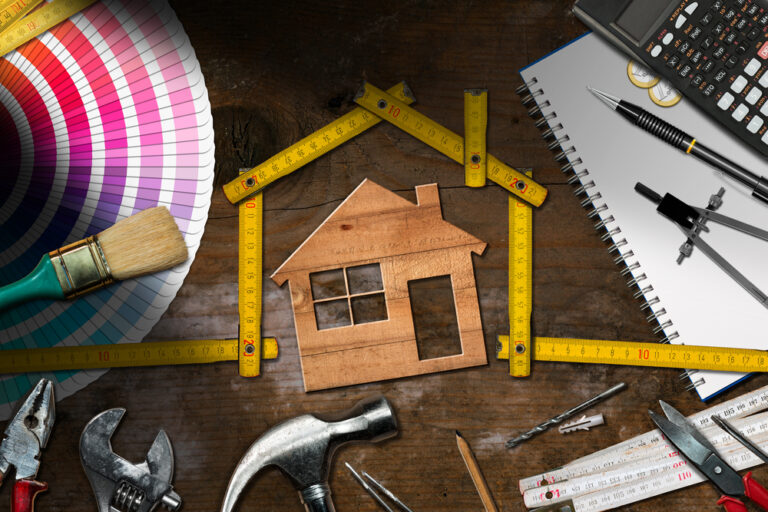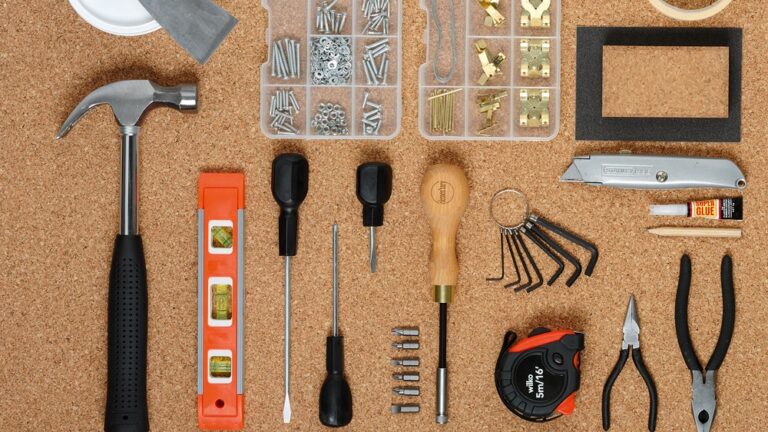Home improvement is an exciting and rewarding endeavor. Whether you’re a first-time homeowner or someone looking to enhance your existing space, upgrading your home can not only increase its value but also improve functionality and comfort. For beginners, however, the thought of embarking on a home upgrade can be overwhelming. The good news is that, with the right guidance, it’s possible to make thoughtful upgrades that will leave your home feeling fresh, stylish, and efficient.
This guide is designed for those who are new to home improvement, offering a step-by-step approach to identifying the right upgrades, understanding the tools you need, and executing your projects with confidence.
1. Start with a Vision
Before diving into the world of home upgrades, it’s essential to understand what you want to achieve. Home improvement can mean different things to different people. For some, it might be about enhancing curb appeal or improving energy efficiency, while for others, the focus may be on increasing space or modernizing the design.
Take some time to assess your current home and identify areas that need attention. This might include outdated appliances, worn-out floors, or cluttered spaces that could benefit from better organization. A clear vision will help guide your decisions and keep your projects focused.
Consider the style and function you want to achieve. Do you prefer a minimalist, modern look, or are you drawn to a cozy, rustic aesthetic? Knowing your personal style will help you choose materials, colors, and design elements that align with your vision for the home.
2. Set a Realistic Budget
Home improvement projects can vary significantly in cost depending on the scope of the work. As a beginner, it’s crucial to set a realistic budget to avoid unnecessary stress or financial strain. Start by breaking down your project into manageable pieces and estimating costs for materials, tools, and labor.
While it’s tempting to splurge on high-end finishes or the latest technology, it’s often possible to achieve excellent results without breaking the bank. For example, you can consider more affordable alternatives to luxury materials like granite countertops, such as quartz or laminate, that still provide a high-end look without the hefty price tag.
If your project requires professional help—such as hiring a contractor for electrical or plumbing work—make sure to factor in those costs as well. It’s also a good idea to allocate some extra funds for unexpected expenses that may arise during the process.
3. Plan Your Projects
Once you’ve established a budget, the next step is to break your home improvement plan into smaller, more manageable tasks. Prioritize the areas of your home that need the most attention and work from there. Not every upgrade needs to be completed all at once.
For example, if you’re focusing on your kitchen, you might want to start by replacing the countertops, followed by upgrading the backsplash and then refreshing the cabinetry. Or, if you’re tackling your home’s exterior, you might begin with painting the front door and windows, then move on to landscaping and lighting.
The key to staying on track is breaking the project down into stages, so you don’t feel overwhelmed by the process. This approach also helps with managing your budget and time, making it easier to see progress as you go along.
4. Start Small with DIY Projects
One of the easiest and most cost-effective ways to improve your home is by tackling small DIY projects. There’s a sense of satisfaction in completing a task on your own, and it’s a great way to build your skills. Plus, small upgrades can make a big impact when combined.
Here are a few DIY home improvement projects that are perfect for beginners:
-
Painting Walls or Furniture: A fresh coat of paint can transform a room in no time. Choose a color that complements your overall design, and use painter’s tape and drop cloths for clean, professional-looking results. You can also paint furniture or cabinets for an updated look.
-
Installing New Hardware: Switching out cabinet handles, drawer pulls, and light fixtures can make a noticeable difference without a large investment. This simple upgrade can modernize your space and give it a polished appearance.
-
Upgrading Flooring: If you’re dealing with outdated flooring, there are several DIY-friendly options. Peel-and-stick vinyl tiles, for instance, are an easy and affordable way to update a kitchen or bathroom floor. Alternatively, you can install laminate or engineered hardwood floors, which are relatively easy for beginners to install.
-
Installing Shelving: Adding shelves to walls is a fantastic way to create storage space and enhance your home’s organization. Whether it’s in the kitchen, living room, or bathroom, floating shelves can hold decorative items or essential everyday tools, adding both form and function to your home.
As you start these DIY projects, remember that the right tools are essential for achieving professional-looking results. Investing in a few basic tools—such as a drill, screwdriver set, measuring tape, level, and paintbrushes—will make your projects go smoothly. Many home improvement stores offer tool rental programs, so you don’t have to buy everything you might only use once.
5. Know When to Call a Professional
While DIY projects are a great way to get started, there will be times when it’s necessary to call in a professional. Some home improvement tasks—particularly those involving plumbing, electrical work, or structural changes—require specialized knowledge and training to ensure safety and code compliance.
For example, upgrading electrical outlets, rewiring a circuit, or installing a new electrical panel should always be handled by a licensed electrician. Similarly, major plumbing work, like replacing pipes or installing a new water heater, should be done by a plumber to avoid potential damage or leaks.
If you’re tackling a larger remodeling project, such as adding a room or knocking down walls, it’s important to hire a qualified contractor who can handle the logistics, permits, and complex aspects of construction. They’ll also help you avoid costly mistakes and ensure that the work complies with local building codes.
Before hiring a professional, always ask for references and check their licensing and insurance to ensure that they are reliable and reputable.
6. Focus on Energy Efficiency
Energy efficiency is one of the most valuable upgrades you can make to your home. Not only will energy-efficient upgrades help reduce your utility bills, but they can also make your home more comfortable and sustainable. Plus, many of these upgrades are relatively simple and can be done with minimal investment.
-
Upgrade Insulation: Proper insulation helps regulate your home’s temperature and reduces the need for heating and cooling. Consider adding insulation to your attic or walls to improve energy efficiency.
-
Install Energy-Efficient Windows: Replacing old windows with energy-efficient models can help reduce heat loss in winter and keep your home cooler in summer. This will not only save you money on heating and cooling but also enhance your home’s curb appeal.
-
Upgrade to LED Bulbs: Switching to energy-efficient LED bulbs can significantly reduce your energy consumption. They last longer and use less energy than traditional incandescent bulbs, making them a great, inexpensive upgrade.
-
Seal Air Leaks: Check for drafts around windows, doors, and vents. Sealing these gaps with weather stripping or caulking can help keep your home more comfortable and lower energy costs.
7. Add Smart Technology
Incorporating smart home technology can improve your home’s convenience and efficiency. Smart thermostats, lights, locks, and security systems offer the ability to control your home’s settings remotely, saving both time and money.
Start by installing a smart thermostat, which can learn your temperature preferences and adjust the heating or cooling accordingly. Smart light bulbs can be programmed to turn on and off at specific times, while smart locks provide enhanced security by allowing keyless entry. These upgrades can make your home feel more modern, convenient, and secure, all while increasing its appeal to future buyers.
8. Don’t Forget Curb Appeal
The exterior of your home is the first impression visitors and potential buyers will have. Simple upgrades to your curb appeal can make your home more inviting and boost its value.
Start by maintaining your lawn, trimming bushes, and adding flower beds or potted plants for a pop of color. A new coat of paint on your front door, updated house numbers, or new outdoor lighting can also enhance your home’s exterior.
Conclusion
Home improvement doesn’t have to be an overwhelming or expensive endeavor. By starting with small, manageable projects and focusing on upgrades that improve both style and functionality, you can transform your home into a space that reflects your personal taste and meets your needs. As a beginner, the key is to set a clear vision, work within your budget, and know when to seek professional help. With the right mindset and a few essential tools, you’ll find that upgrading your home can be a highly rewarding experience.


